The 2005 National Scout Jamboree was held at Fort A.P. Hill, Virginia, from July 25 to August 3 with the theme “Character Not Only Counts, It Multiplies”. 43,307 Scouts participated in the Jamboree.
In 2005, the Order of the Arrow committed itself once again to assisting with the logistics and programming of the Jamboree. It was evident that the OA was solidly engaged in providing a tremendous amount of service and programs throughout the Jamboree.
One of the most popular programs at the Jamboree was the Order of the Arrow theatrical production Twelve Cubed. A successor to the Order’s famed productions of Odyssey of the Law and Scoutopia, at previous Jamborees, Twelve Cubed was based upon recognition that the term “values” has an application in mathematical equations as well as ethical ones. “Twelve Cubed” represented an equation for life and a formula for values obtained by applying the twelve points of the Scout Law and the three parts of the Scout Oath to one’s life — a multiplication, if you will, which has an exponential effect upon a Scout’s life. Through creative, artistic, and interactive endeavors with the audience, the Twelve Cubed production helped Scouts at the Jamboree define the true meaning of character and values.
Registering its largest turnout in its nine-year history, The Outdoor Adventure Place (TOAP) had 33,000 attendees visit the exhibit area during the nine days of the Jamboree. Through the Leave No Trace (LNT) program, Scouts were able to train in the seven principles of LNT, as well as meet with various federal land management agencies, including the U.S. Forest Service, Bureau of Land Management, Corps of Engineers, National Park Service and U. S. Fish and Wildlife Service. In addition to serving as a learning environment, TOAP was a place to have fun and hang out; Scouts were constantly involved with activities such as the many climbing walls, outdoor cooking area, and pioneering tower.
The OA American Indian Village continued to expand in popularity and scope from previous Jamborees. The Village, located near the Merit Badge Midway, also offered Scouts the opportunity to earn the Indian Lore Merit Badge and explore American Indian culture through living history displays, songs, and dance. During the Jamboree, 325 full and partial Indian Lore Merit Badges were awarded. The Village also hosted a large Pow Wow one evening, and used a traveling group of dancers to promote their program area and the American Indian culture throughout the Jamboree.
The Order of the Arrow’s Service Corps provided hundreds of hours of cheerful service to the thousands of participants in all corners of the Jamboree. Arrowmen on the Service Corps team served as security for arena shows, delivered lunches, conducted flag raisings, and hosted special dignitaries at Fort A. P. Hill. In addition, the Service Corps provided service to the various Jamboree camps and in turn became the most well-known and visible group on-site. Using the theme “Service: Can You Dig It?” they demonstrated the Order’s principles throughout the Jamboree.
3, Ceremonies, National Event, OA, Scouting
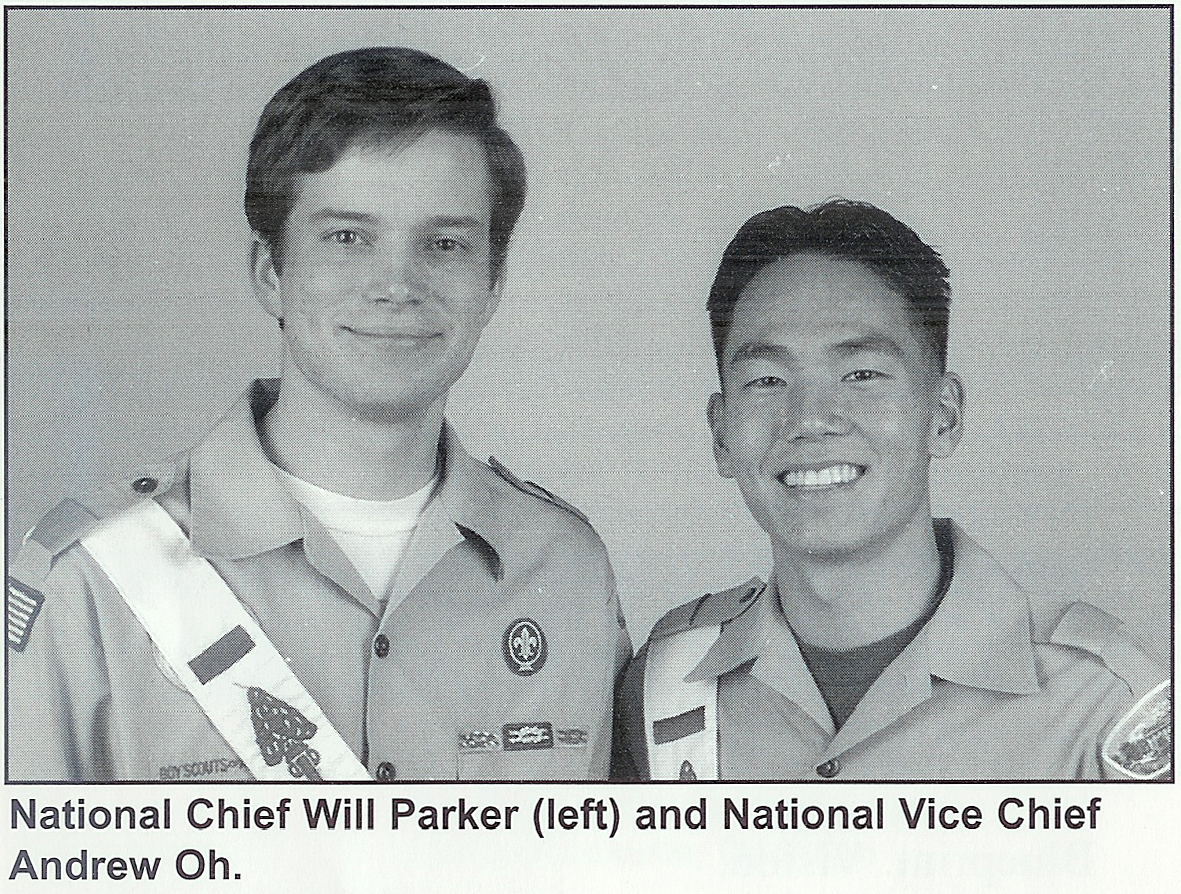 Will Parker of Alibamu Lodge, Montgomery Alabama was elected National Chief. Andrew Oh of Amangamek Wipit Lodge, McLean, Virginia was elected National Vice Chief.
Will Parker of Alibamu Lodge, Montgomery Alabama was elected National Chief. Andrew Oh of Amangamek Wipit Lodge, McLean, Virginia was elected National Vice Chief.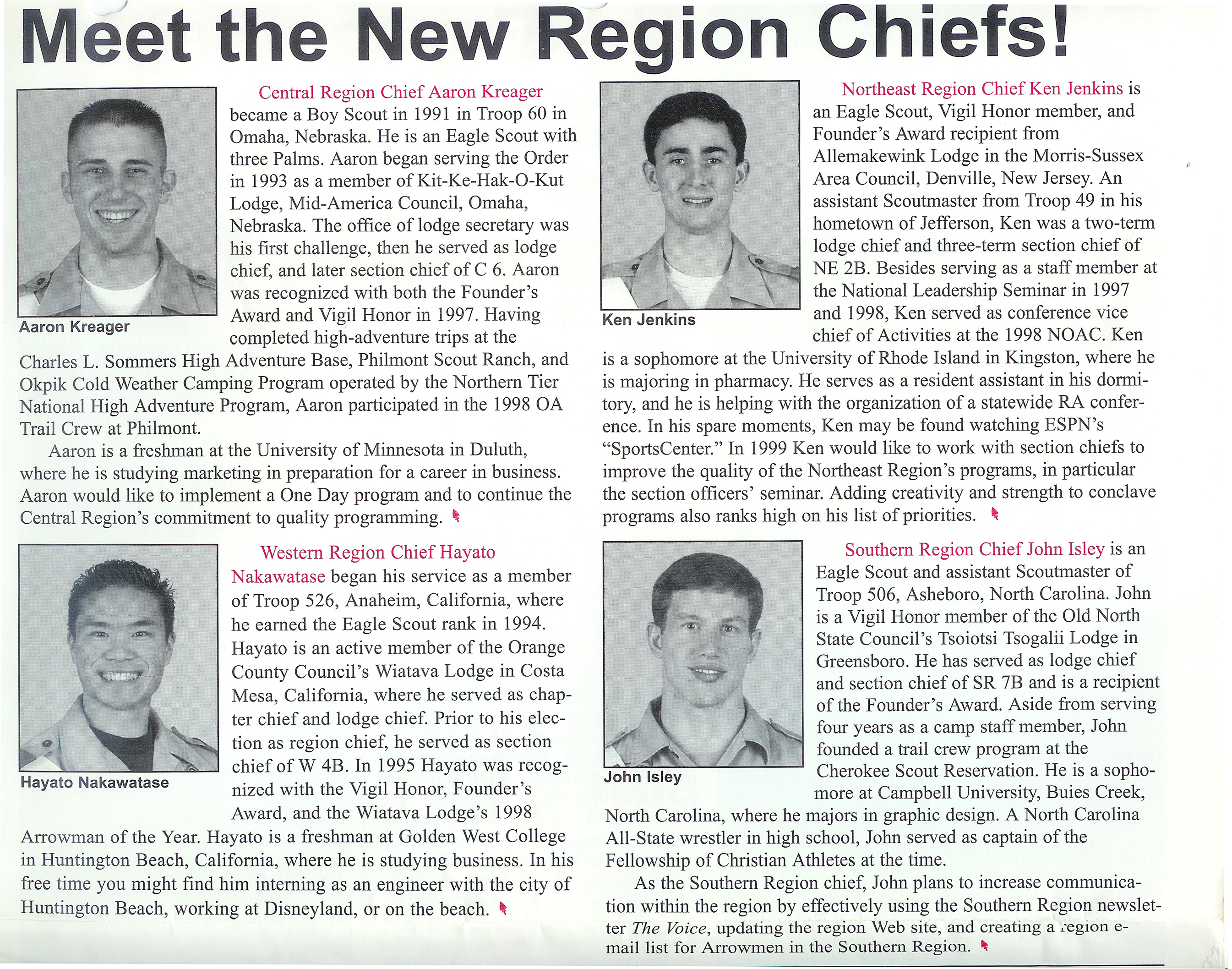 The Four Region Chiefs elected were: Aaron Kreager – Central Region, Ken Jenkins – Northeast Region, Hayato Nakawatase – Western Region and John Isley – Southern Region.
The Four Region Chiefs elected were: Aaron Kreager – Central Region, Ken Jenkins – Northeast Region, Hayato Nakawatase – Western Region and John Isley – Southern Region.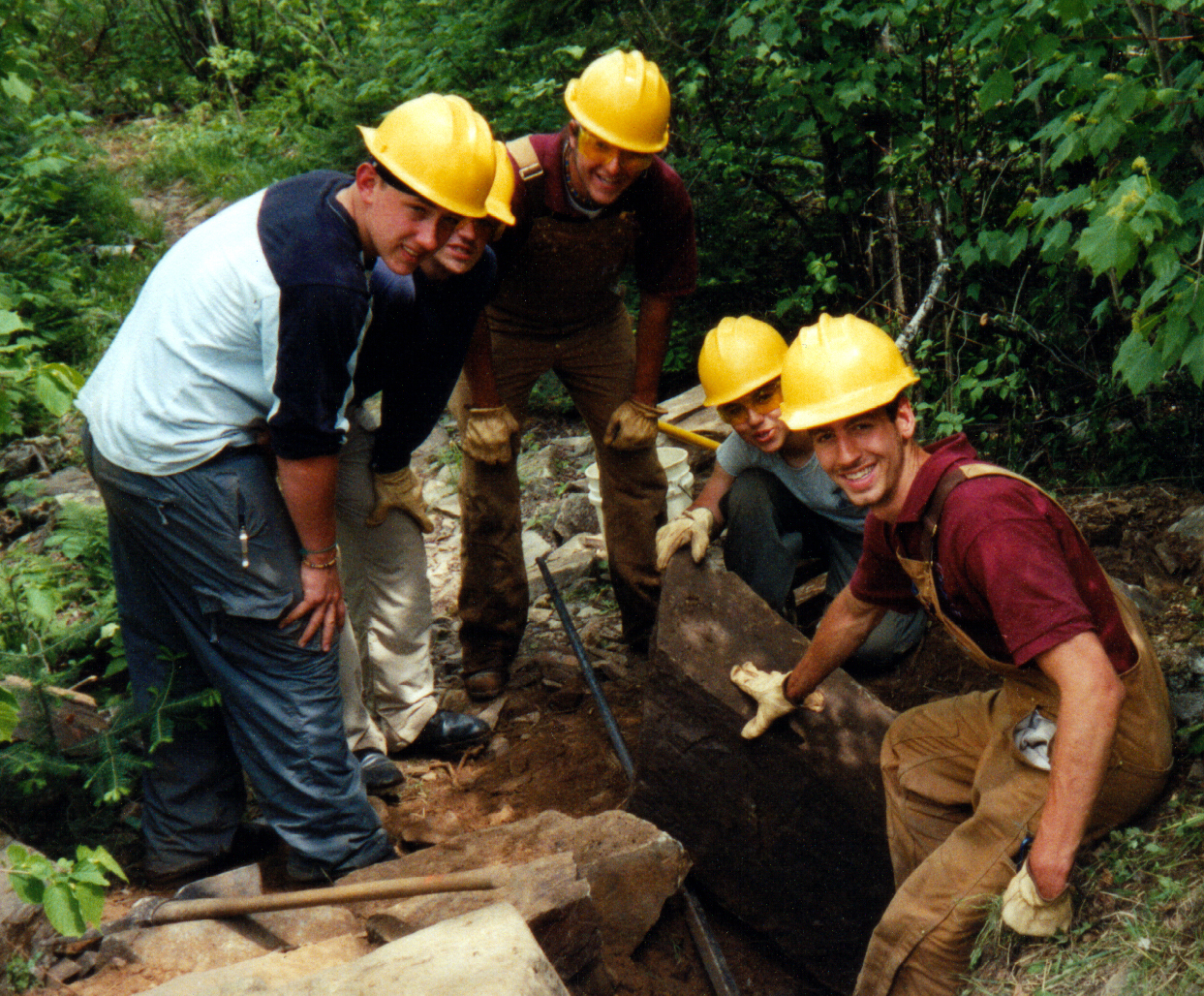 W
W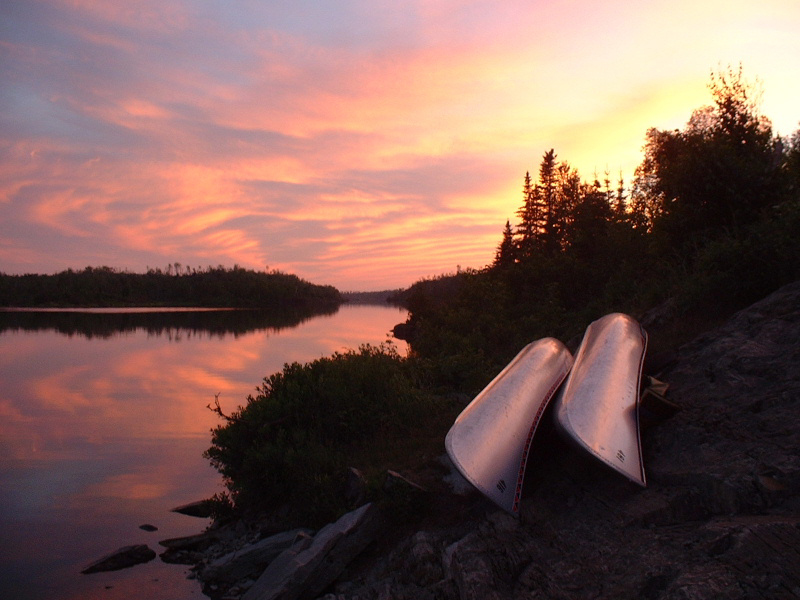 ilderness Voyage is a 14-day trek experience broken into two distinct parts. Seven days of the journey is crew-based service on some of the hundreds of portage trails in the northern boundary waters. The second half of the Wilderness Voyage experience is a seven-day trek with the same service crew through the boundary waters. This trek is planned out by the crewmembers and can be modified to see some of the many beautiful waterfalls, rapids, landscapes, sunsets and Native American markings.
ilderness Voyage is a 14-day trek experience broken into two distinct parts. Seven days of the journey is crew-based service on some of the hundreds of portage trails in the northern boundary waters. The second half of the Wilderness Voyage experience is a seven-day trek with the same service crew through the boundary waters. This trek is planned out by the crewmembers and can be modified to see some of the many beautiful waterfalls, rapids, landscapes, sunsets and Native American markings.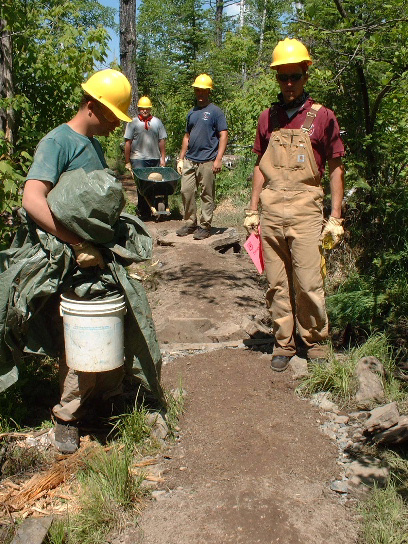 ly recognized in 2003 when the United States Forest Service (USFS) awarded the program and the OA with a national award for youth support. The many miles and hours spent repairing and preserving portage trails along with Scouting’s excellent conservation record were included in the announcement of this award.
ly recognized in 2003 when the United States Forest Service (USFS) awarded the program and the OA with a national award for youth support. The many miles and hours spent repairing and preserving portage trails along with Scouting’s excellent conservation record were included in the announcement of this award.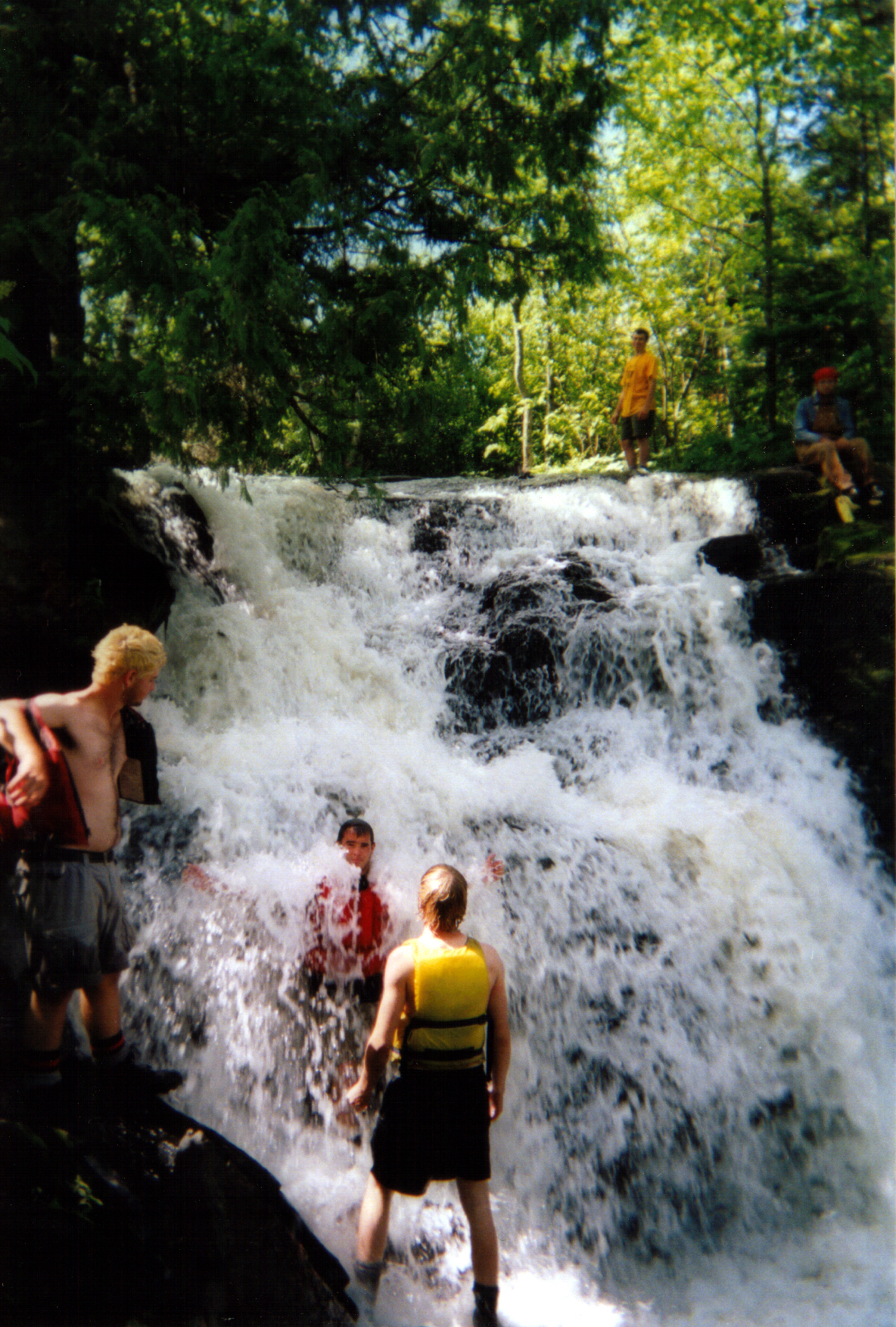 e accomplishments of the foreman, staff and participants in the OA Wilderness Voyage program would eventually lead to the development of the
e accomplishments of the foreman, staff and participants in the OA Wilderness Voyage program would eventually lead to the development of the 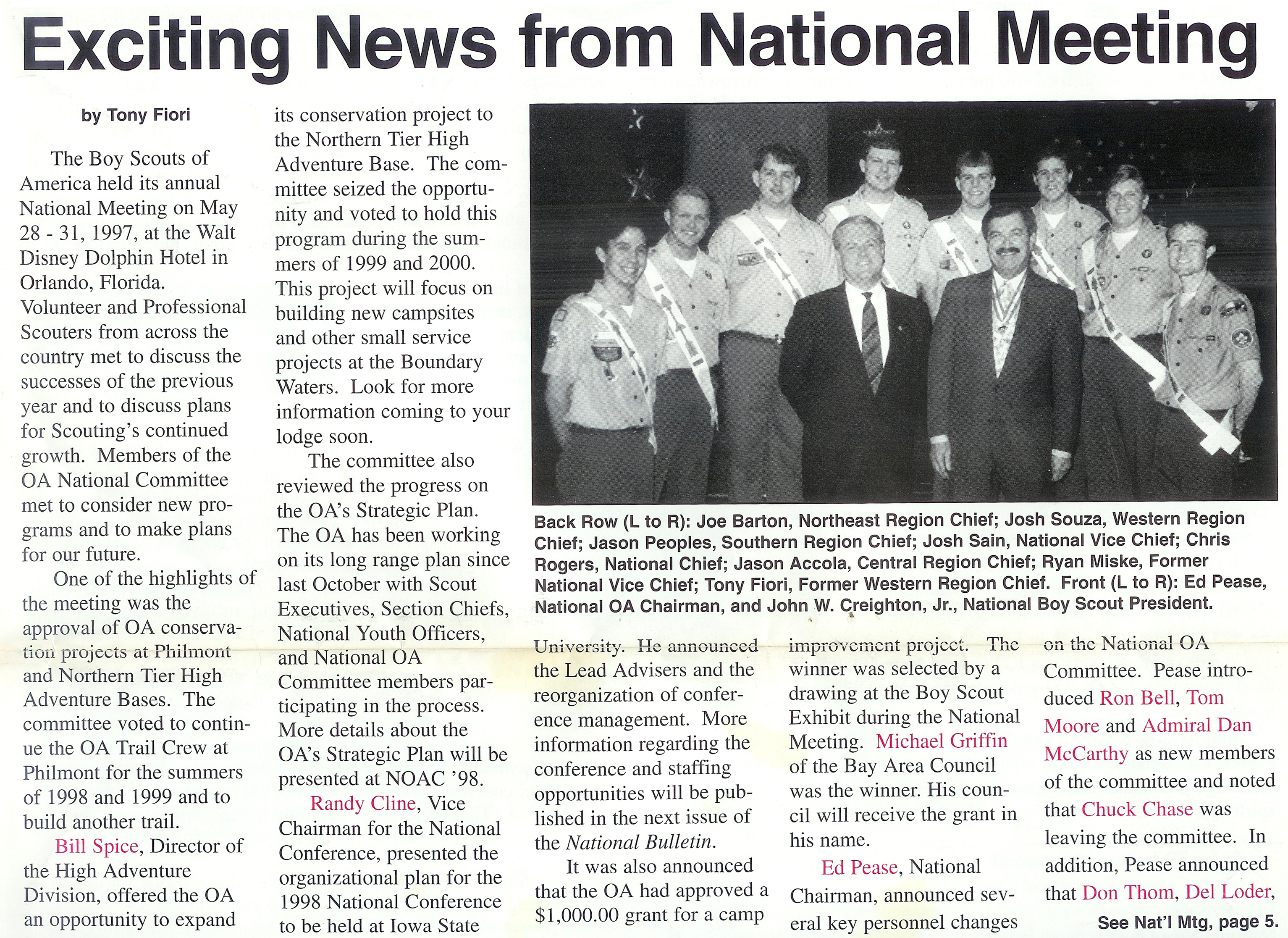
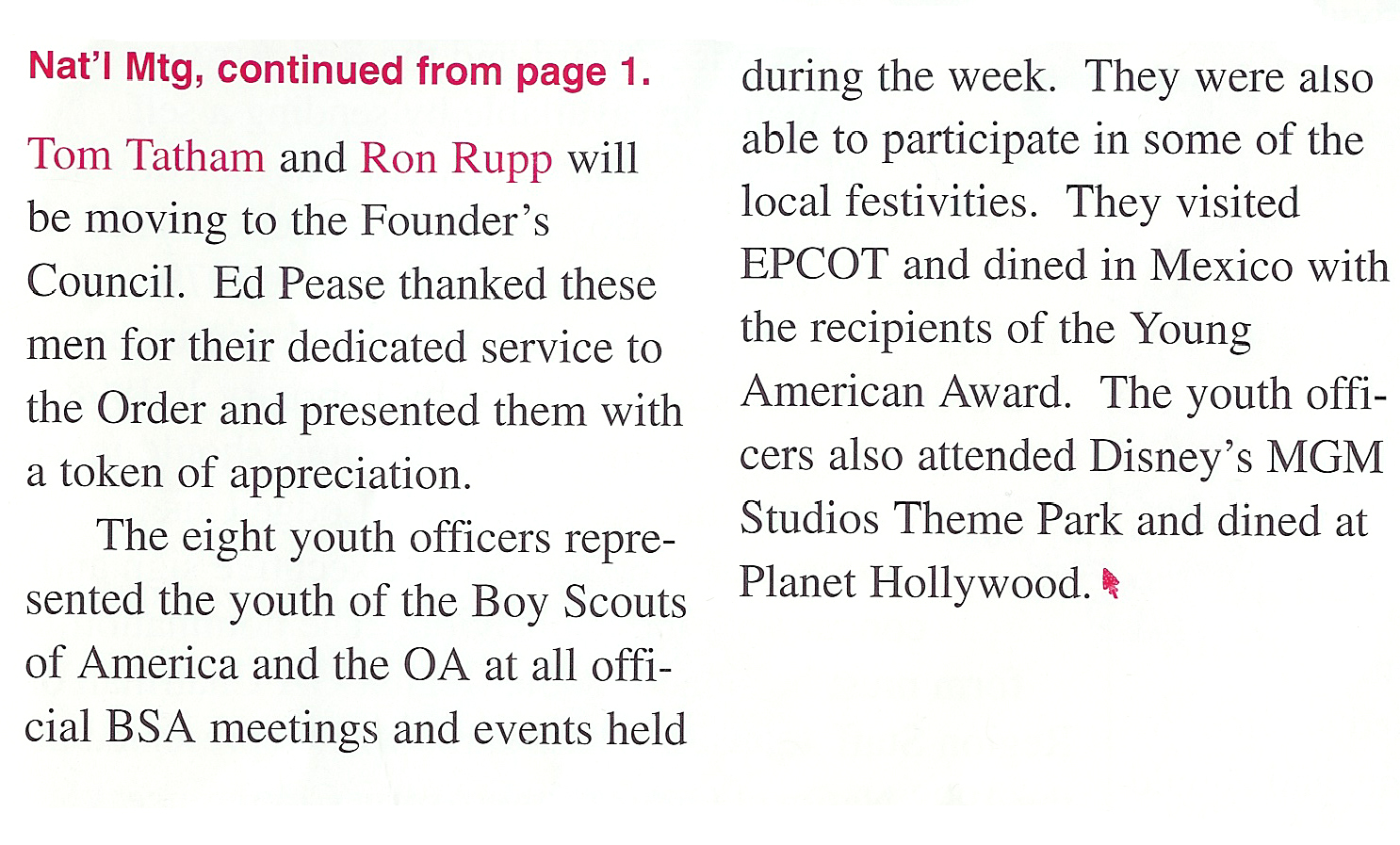
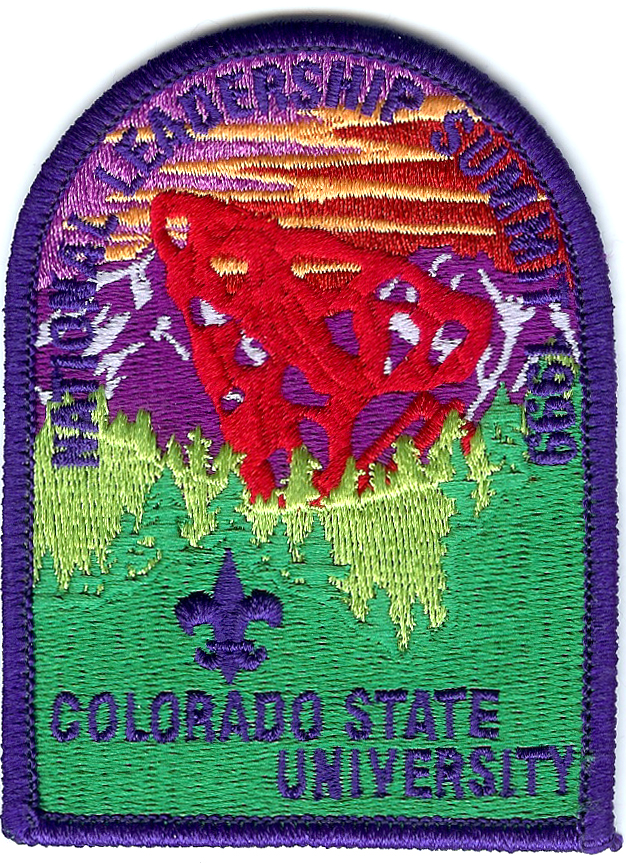
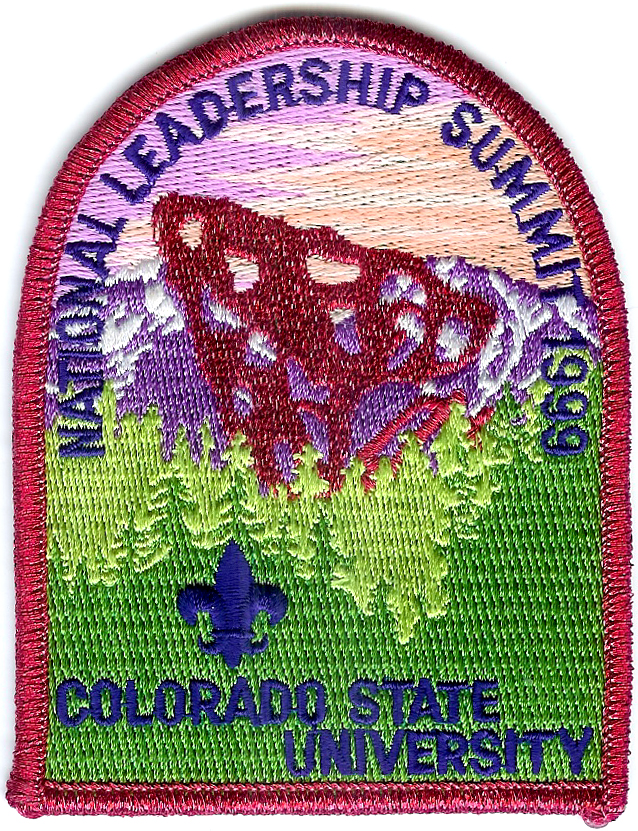 This event was the first of its kind. Never before had there been a national event targeted specifically for the 'Key Three' leaders from all the lodges in the nation.
This event was the first of its kind. Never before had there been a national event targeted specifically for the 'Key Three' leaders from all the lodges in the nation.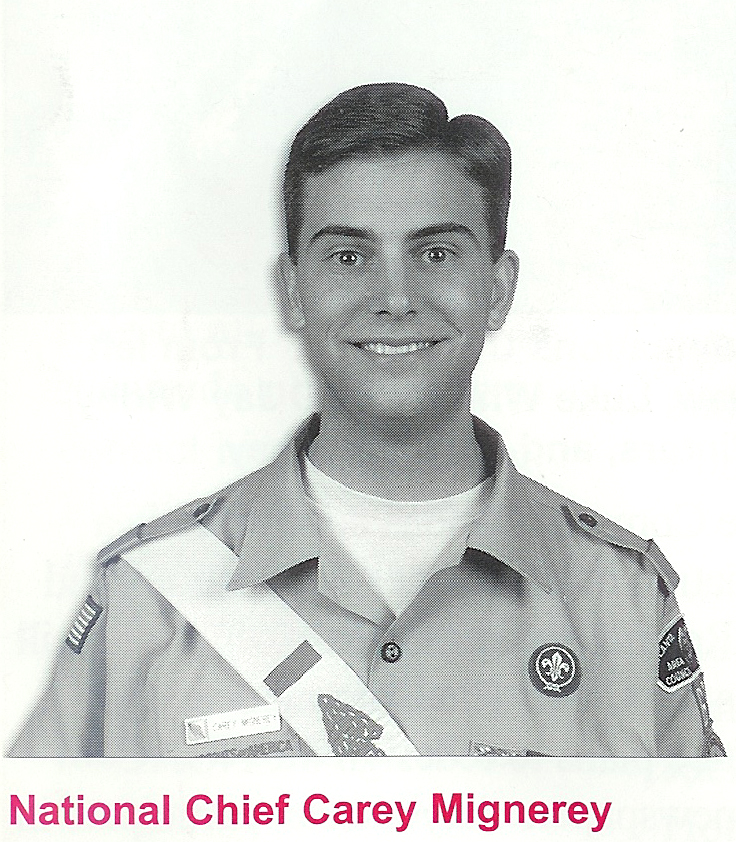 C
C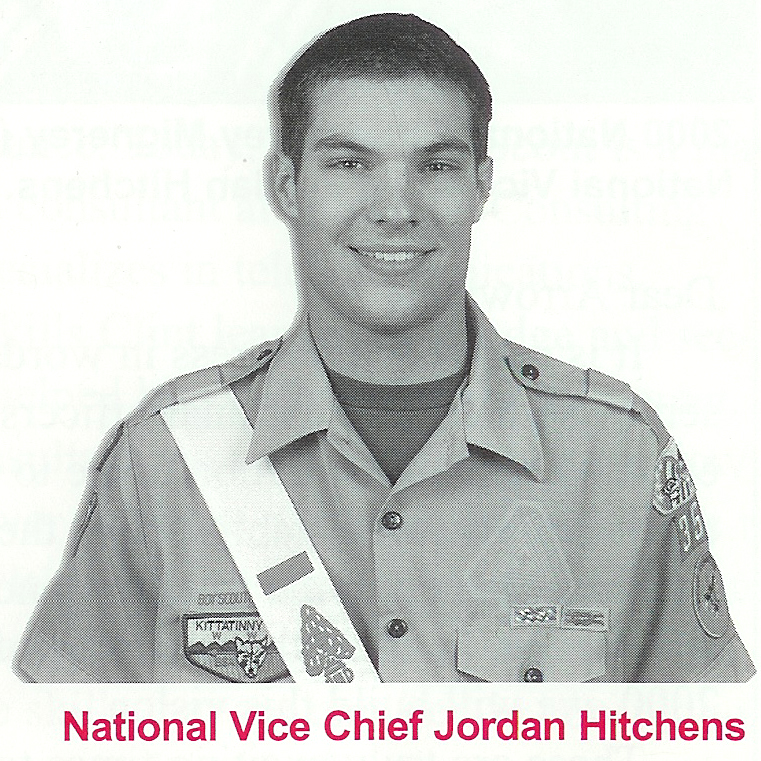 arey Mignerey from Egwa Tawa Dee Lodge, Roswell, Georgia was elected National Chief. Jordan Hitchens from Kittatinny Lodge, Reading, Pennsylvania was elected National Vice Chief.
arey Mignerey from Egwa Tawa Dee Lodge, Roswell, Georgia was elected National Chief. Jordan Hitchens from Kittatinny Lodge, Reading, Pennsylvania was elected National Vice Chief.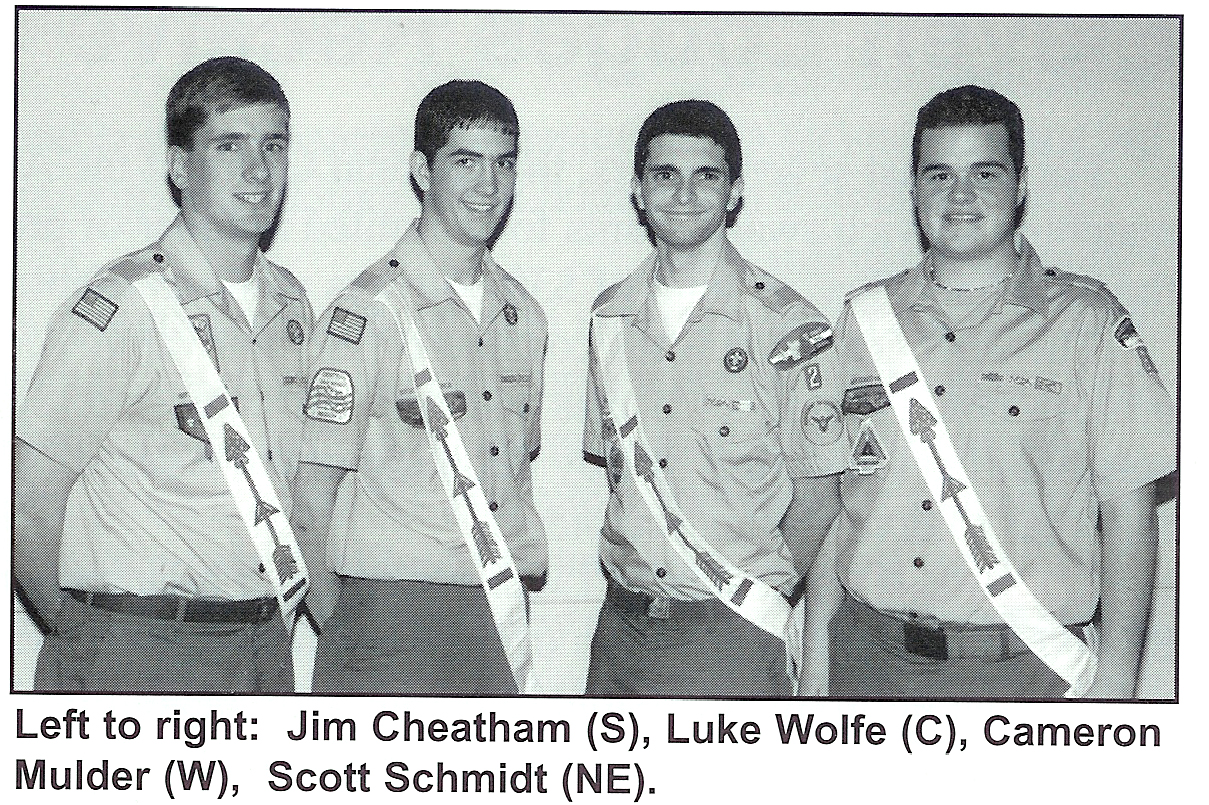 The Region Chiefs elected were: Jim Cheatham – Southern Region, Luke Wolfe – Central Region, Cameron Mulder – Western Region and Scott Schmidt – Northeast Region.
The Region Chiefs elected were: Jim Cheatham – Southern Region, Luke Wolfe – Central Region, Cameron Mulder – Western Region and Scott Schmidt – Northeast Region.